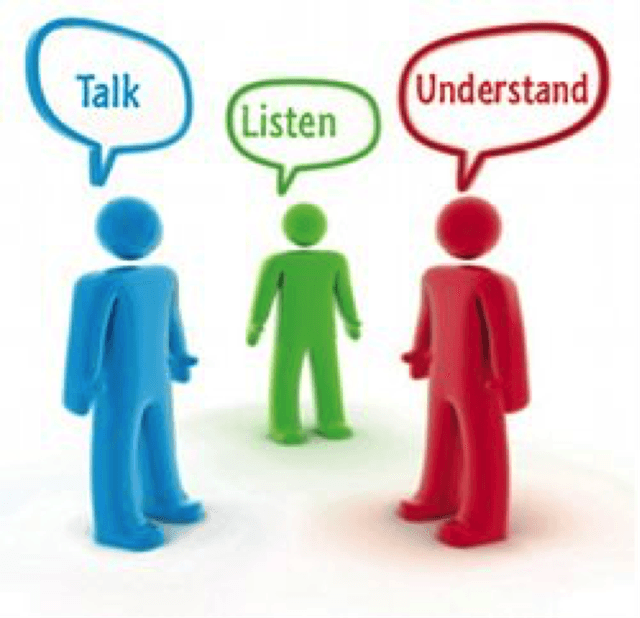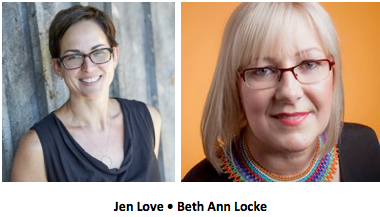Moving from fairness to openness
- Written by
- Beth Ann Locke and Jen Love
- Added
- March 22, 2017
What a great discussion to champion, thank you, SOFII! These most certainly are conversations we have amongst ourselves – as women, as fundraisers, as mothers and partners, mentors and co-workers. We stand together committed to moving the needle on gender parity and pay equity.
You declare, ‘It’s just not fair!’
And, indeed, it isn’t.

Let’s talk about this idea of fairness. There is one big problem with fairness. Fairness is a moving target. You’ve likely heard this quote, or something similar: When you’re accustomed to privilege, equality feels like oppression.
Instead of attempting to make things fair, let’s create an inclusive circle for dialogue, since conversation is the starting point of change. Let’s create an open space for discussion and conversation about parity and equity.
We believe that to have this open conversation and to move our sector forward from the “unfair” position it is in, we need to begin with three solid ways to move change forward: awareness, reflection and action.
Here are six ways you can work toward openness. And we can. All of us. Today. Right now.
1. Determine your baseline
Consider the people you have NOW as your baseline in your nonprofit. How do the positions of power (managers, directors, CEO, board members) fall along the continuum of gender? Who holds the higher-paid, higher-power positions? And who the lower-paid, lower-power positions? Is one group filling most of the positions and, if they are, is the pay equal for men, women and those non-conforming to gender roles?
2. Change up recruitment
Set a goal to move the needle in your recruitment. How are you recruiting your staff and board? If, for example, you find your event staff tends to be all younger women, consider HOW you are advertising this role in the first place. Are you using biased language that would be more attractive to younger women? Reflect on your current practices and set new goals around encouraging diversity by changing the language in your postings.
3. Get rid of the ‘code’.
If you find that many in positions of leadership are men, consider how you are advertising those positions, too. Saying your nonprofit is looking someone who has been in a leadership position for 15+ years may naturally attract people from a dominant group, or culture – mostly older white men. Reflect on what your nonprofit actually needs and do the hard work of stripping away coded language that may tell people of colour and women ‘you aren’t really wanted’. We suggest you learn more for yourself – and invest for your team – about stereotyping and bias, including interview bias.
4. 24 hours before you were founded…
Imagine what was happening in the dark hours before your organisation was founded. A group of restless, passionate people stood together and demanded more for your cause. And, in all likelihood, your organisation, at its roots, is represented by a diverse community of change agents. Is this still reflected in your board members? Your programme staff? Your leadership, communications and fundraising staff?
5. Whose voices are you listening to?
For instance, as you’re staying connected to emerging trends by reading and sharing blogs, attending webinars and conferences, and engaging in social media, how much of what you are consuming or supporting is from the dominant culture? Are you favouring familiar and dominant culture over being open to other voices? What amazing and inspiring voices are you missing because you’re in a bit of an echo chamber?

6. Talk
Talk to colleagues you trust, if you’re not used to having these conversations. Reach out to SOFII, to the other bloggers posting in this series. Be brave and introduce yourself to us. Sharing our collective experiences with gender-based, and other, biases and what we’re doing about it is the only way to make change.
We need to make this change together.
What we want you to take away is that awareness, reflection and action are the three ingredients we need to make change. And the vehicle for this change is open-hearted and open-minded conversations.
Finally – and what we believe is the most important of all – explore emotional intelligence as a professional skill. We believe this is a component of leadership that is missing today and will be the way of the future. More on that in our post, part 2, coming to you soon.
Let’s start the conversation here and now
Have you had experience practicing awareness, reflection and action toward gender and/or pay equity? Or worked to change coded job posting language, or learned about interview bias? We would love to have you share your experiences below – whether they were successful or not. Doing is the first step!























